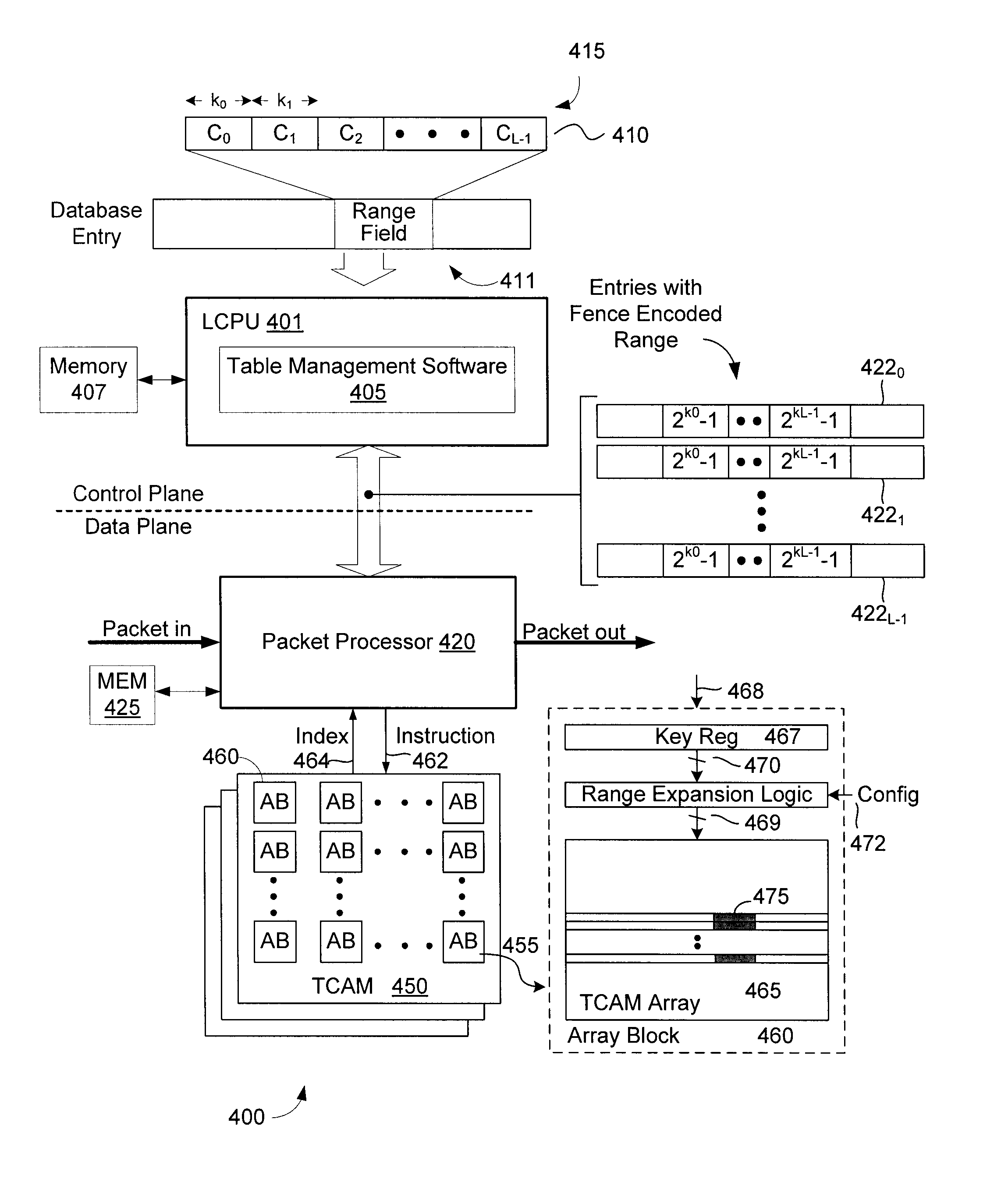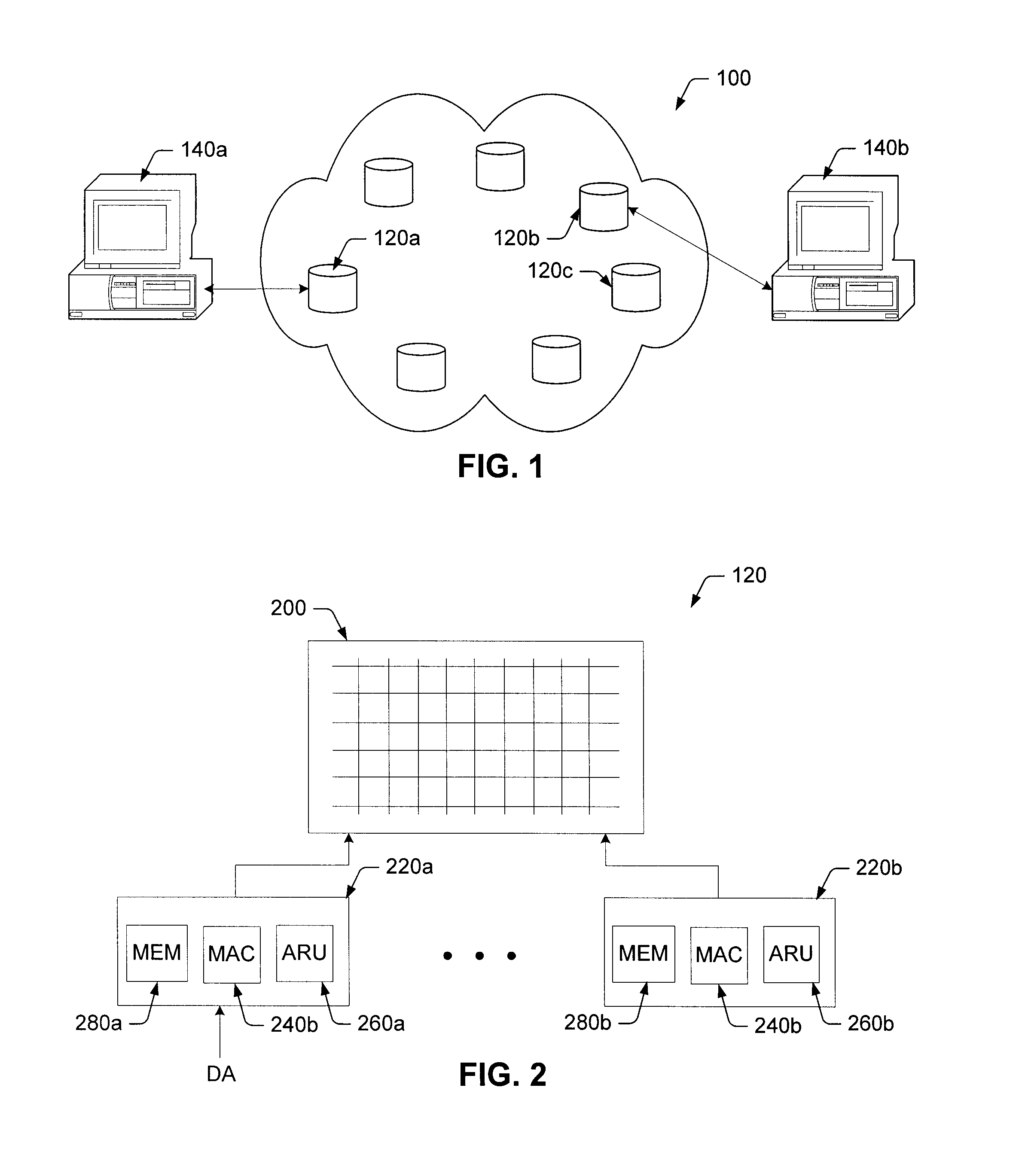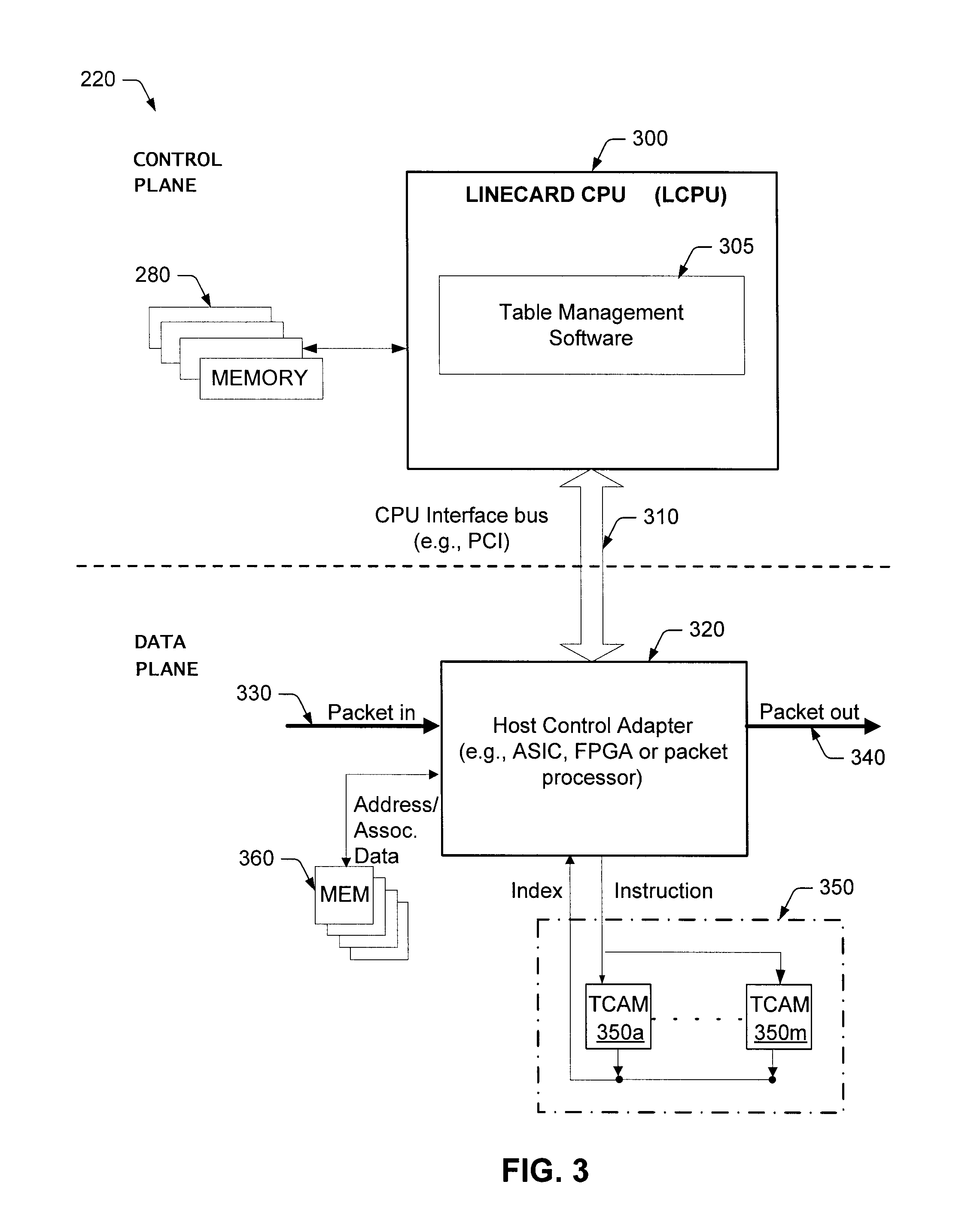Range representation in a content addressable memory (CAM) using an improved encoding scheme
a content addressable memory and range representation technology, applied in the field of communication networks, can solve the problems of reducing the efficiency and storage capacity of the tcam device, and reducing the efficiency of the tcam memory devi
- Summary
- Abstract
- Description
- Claims
- Application Information
AI Technical Summary
Benefits of technology
Problems solved by technology
Method used
Image
Examples
Embodiment Construction
[0030] Although the term “network” is specifically used throughout this disclosure, the term network is defined to include the Internet and other network systems, including public and private networks that use the Internet Protocol (IP) protocol suite for data transport. Examples include the Internet, Intranets, extranets, telephony networks (“using voice over IP”), and other wire-line and wireless networks that converge on the use of the IP family of protocols. Although the term “Internet” may be used throughout this disclosure, the term Internet is merely one example of an IP “network.”
[0031]FIG. 1 illustrates possibly numerous forwarding devices 120 within a computer network 100. The topology of the Internet or the Intranet interposed between computers 140 can vary. If computer 140a wishes to send a packet of data to computer 140b, then it must do so by enabling the packet to traverse one or more forwarding devices 120 within network 100. Forwarding device 120a might receive the ...
PUM
 Login to View More
Login to View More Abstract
Description
Claims
Application Information
 Login to View More
Login to View More - R&D
- Intellectual Property
- Life Sciences
- Materials
- Tech Scout
- Unparalleled Data Quality
- Higher Quality Content
- 60% Fewer Hallucinations
Browse by: Latest US Patents, China's latest patents, Technical Efficacy Thesaurus, Application Domain, Technology Topic, Popular Technical Reports.
© 2025 PatSnap. All rights reserved.Legal|Privacy policy|Modern Slavery Act Transparency Statement|Sitemap|About US| Contact US: help@patsnap.com



